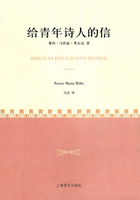As discussed in the previous section, the religious orders had come to China on a great scale.
Let us take the Society of Jesuit as an example for the sake of discussion. In 1814, after the suppression of the Jesuits in the previous century, they were preparing to re-enter China. In 1840, Pope Gregory XVI sent Claudius Gottleland, and two other Je- suits (Ai Fangji and Li Xiufang) to the Jiangnan area. In 1846, When Emperor Dao Guang lifted the order on the Church"s sup- pression, Gottleland began to talk with officials in Shanghai to regain church property. Since the old church in the city had been turned into a temple, the Jesuits were given three pieces of land in three different areas instead: namely, Dong Jiadu, Yang Jingbang and Shi Pinong. In 1861, because of the influence of the French military, the old church property and the residence of the priests were returned to the Jesuits. Xu Jia Hui was Xu Guangqi"s hometown and his many descendants were Catholics who donated that piece of land to the Church. In 1847, the Jesu-
its set up their headquarters in Xu Jiahui, and Gottleland became the first rector. During the years of 1851 and 1853, the Cathedral in Dong Jiadu and a church in Xu Jiahui were erected.
In the 19th Century, the Jesuits built up many things in Xu Jiahui: seminary, library, natural museum (1869), observatory (1873), Newspaper Press of the Sacred Heart (1887), two con- vents for nuns, a refugee camp and a nursery. By 1890, there were 665 churches in the Jiangnan area, 77 small chapels, two seminaries and another one to train Chinese priests, one orphan- age, one nursery and one hospital.
The Jesuits devoted themselves to education and built many schools in Shanghai. They had Xuhui Gong Xue and the Aloysius elementary school in Xu Jiahui alone. They accepted Catholic students to study not only the Catechism, but also Confucian Classics. By 1856, the Jesuits had 78 schools in Jiangnan areawith 260 students.
The missionaries of the Congregation of the Mission were spread out in Henan, Menggu, Zhejiang and Zhili provinces. In1860, when the military of Britain and France occupied Beijing, they resumed missionary activities there. The Dominican Order was in Fujian province, Franciscans in Hunan, Hubei, Shanxi,Shaanxi and Shandong provinces; the Paris Foreign Mission sentpriests to Sichuan, Yunnan and Guizhou, and eventually to Man- churia, Guangxi, Guangdong, Guizhou, Hainan and Tibet.
The second half of the 19th century of China was crowded with missionaries from all over the world. Some of the newly founded European religious orders tried to catch up with the older ones by sending more of their own to China. The most famous one was the Congregation of the Immaculate Heart of Mary founded in 1865 by Verbiest. He brought three priests from Bel- gium to China. A year later, they arrived at Da Xi Wan Zi to take the place of the Congregation of the Mission in Mongolia. They arrived in Gansu in 1878 and went to Xinjiang in 1884. With the expansion of activities, the Apostolic Vicariate was divided into three. There were 37 priests from this order and nine Chinesepriests administering these places. At the end of the century,there were 112 missionaries and 18 Chinese priests in total. They had boys‘ schools and girls’ schools, and a seminary for training Chinese priests.
Following the coming of the missionaries, the Catholic Church was revitalized and further developed. By 1858, reli- gious activities could be seen everywhere and the number of Catholics began to increase quickly. In 1870, there were 36,9411Catholics , in 1885 the number had reached 558,980, with 35bishops, 453 foreign missionaries and 273 Chinese priests. In 1890, the number of Catholics rose to 620,000, and by the 1897, therewere 759 European missionaries and 409 Chinese priests.
In order to adapt to the changes in China, Rome decided to reorganize the Apostolic Vicariates. In 1846, there were 10 dio- ceses in China, among which, three were archdioceses: Macao, Beijing and Nanjing; there were seven Apostolic Vicariates: Shaanxi, Shanxi, Shandong, Huguang, Jiangxi, Yunnan and Hong Kong.
In 1870, Rome called a meeting in the Vatican and the ma- jority of the Apostolic delegates in China attended to discuss affairs in China. They proposed to divide the country into five mission territories. Later, the missionary provinces would be built on this basis. In 1879 (5th year of Guang Xu), the mission terri- tories were divided as follows: the first one included Zhili, Liaodong and Mongolia; the second included Shandong, Shaanxi, Henan, Gansu; the third included Hunan, Hubei, Zhejiang, Jiangxi and Jiangnan; the fourth included Sichuan, Yunnan, Guizhou and Tibet; the fifth included Guangdong, Guangxi, Hong Kong and Fujian. They decided that every territory should have a meeting every five years and the remaining territories needed to send representatives to participate. In 1880, the five missionary terri- tories had their meetings separately mainly to discuss church affairs. They also talked about the administering of the sacra- ments, the training of Chinese priests and pastoral methodology.
Rome increased its financial support from 637,000 Francs a year in 1867 to 861,000 in 1882. This amount of money was only half of the entire cost of China operations, and the religious orders had to raise the rest on their own. Most of the money was raised in China. They rented out church property, except the use of the churches and areas like Shanghai, Tianjin and Sichuan didwell in collecting rents. In 1877, when a terrible famine broke out in Northern China, the missionaries rented their lands to non- Catholics to earn interest.















